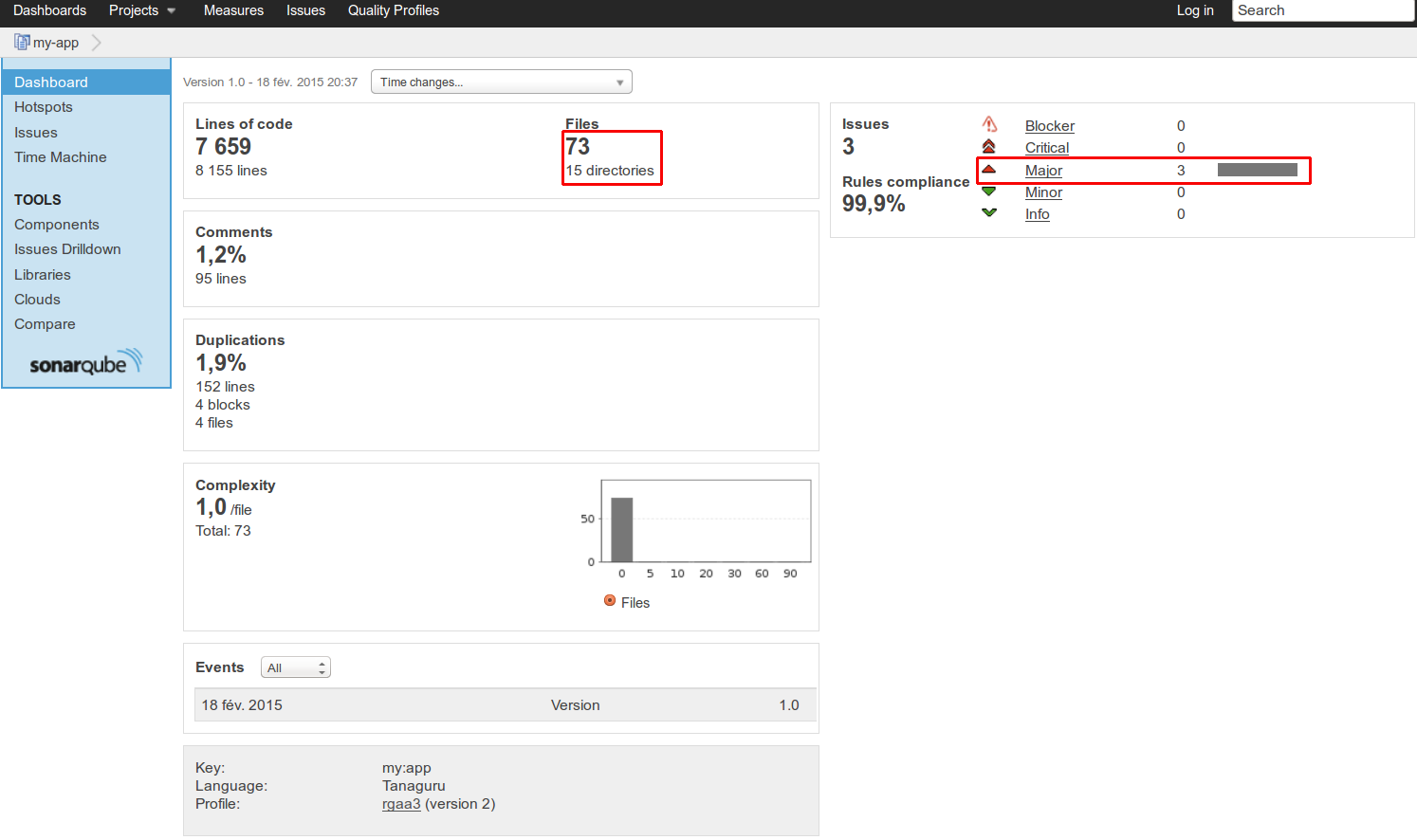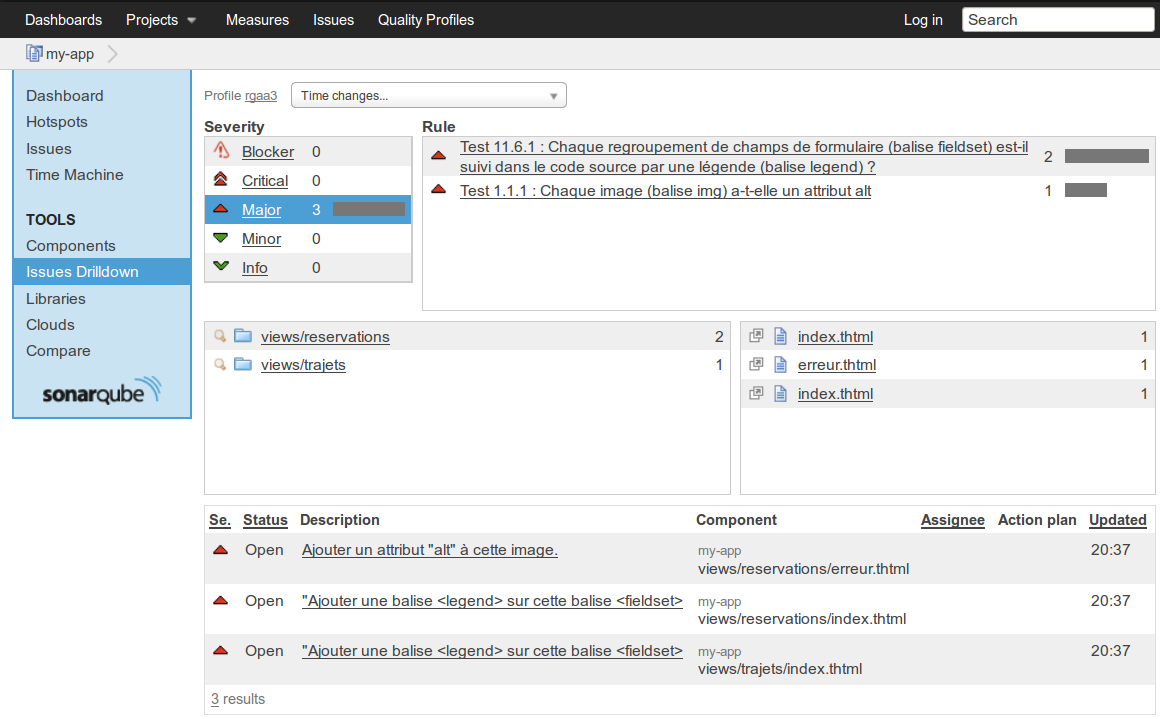Run Tanaguru analysis with the SonarQube Runner
You can have all the details about usage and set-up in the official Analyzing with SonarQube Runner page.
Concrete example
Let's give an example of a sonar-project.properties file that can be used to perform an analysis with the Tanaguru plugin.
# Required metadata
sonar.projectKey=my:project
sonar.projectName=My project
sonar.projectVersion=1.0
# Path to the parent source code directory.
# Path is relative to the sonar-project.properties file. Replace "\" by "/" on Windows.
# Since SonarQube 4.2, this property is optional if sonar.modules is set.
# If not set, SonarQube starts looking for source code from the directory containing
# the sonar-project.properties file.
sonar.sources=src
# Encoding of the source code
sonar.sourceEncoding=UTF-8
# Additional parameters
sonar.language=accessibility
Once created and copied in the root directory of the project, run the following command from the project base directory to launch the analysis :
sonar-runner
Result of the analysis
The result of the analysis is now available from the SonarQube web interface (accessible for a default installation at the URL http://localhost:9000/)
The Tanaguru plugin analyzes HTML within any language, such as PHP, JSP, or whatever and produces a synthesis that contains metrics such as :
- The list of the issues sorted by their severity
- The number of tested files and lines of code

Clicking on each severity link in the list of the issues leads to the details of the errors, pointing precisely the problem in the source code (type of error, file, and line number).

Parsed files
The analysed files are the files present in the directory set by the sonar.sources property that matches one of the file suffixes set for the plugin
Next step
- proceed to Run with Maven
- proceed to Run with SonarQube Jenkins plugin
- proceed to Run with SonarQube Eclipse plugin